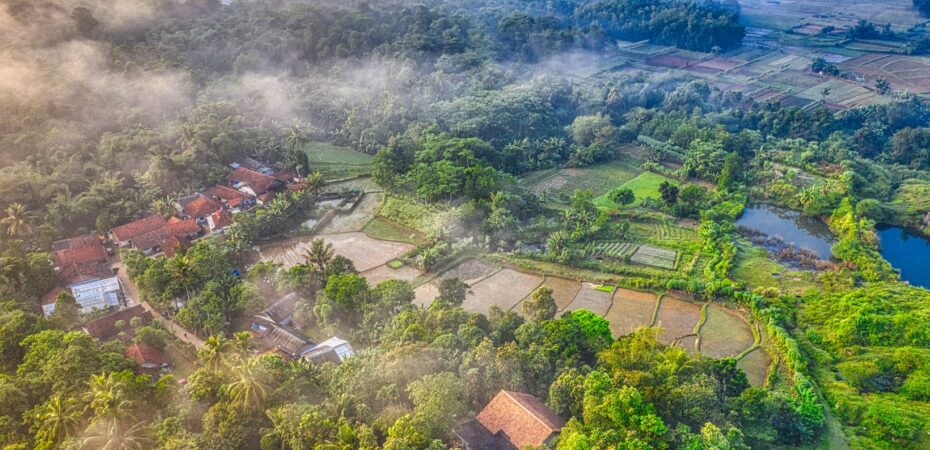Going on a vacation to a tropical island nation is like opening a book filled with vibrant pictures: each page is a visual feast, and every chapter is an unfolding adventure.
The Philippines, an archipelago of over 7,641 islands nestled in the heart of Southeast Asia, presents an unparalleled opportunity for first-time tropical explorers.
The rhythmic dance of palm trees, the warm embrace of the sun, and the allure of turquoise waters are just the prelude to the archipelago’s charms.
Are you ready to leap into a world where the heartfelt hospitality of Filipinos enhances the serenity of nature’s splendor?
Key Takeaways
- The Philippines offers a captivating array of natural beauty.
- Filipino culture and hospitality are suitable for first-time international travelers
- Understanding travel practicalities ensures a smooth journey
Discovering the Philippine Islands
When you set foot in the Philippines, you’re entering a world of natural diversity, with over 7,000 islands waiting to be explored.
Pristine beaches, breathtaking natural wonders, and underwater spectacles are only some of the attractions that beckon travelers.
Palawan and El Nido
Palawan, known as the last frontier of the Philippines, offers an exquisite blend of lush jungles and stunning marine life. Meanwhile, El Nido serves as a gateway to the awe-inspiring Bacuit Archipelago.
Here, you can marvel at dramatic limestone cliffs and explore the famous Underground River – one of the New 7 Wonders of Nature.
Boracay and White Beaches!
Boracay has gained fame for its powdery white beach, an iconic stretch of sand that glistens under the tropical sun. Despite its bustling atmosphere, Boracay remains a must-visit for beach enthusiasts, with a vibrant nightlife and ample opportunities for water sports and relaxation.
Cebu and Bohol’s Natural Wonders
Cebu entices adventurers with its historic sites and a diverse range of diving spots like Malapascua Island, where you can encounter thresher sharks. Meanwhile, neighboring Bohol offers a change of scenery with the peculiar Chocolate Hills, and Panglao is known for its rich underwater biodiversity.
The Unexplored Gems of Siargao and Camiguin
For a more off-the-beaten-path experience, Siargao invites you with its top-notch surf breaks and lagoons surrounded by mangrove forests.

On a similar note, Camiguin is a treasure packed with hot springs, waterfalls, and sandbars, perfect for travelers seeking serenity amid nature’s charm.
Experience Filipino Culture and Hospitality
When you set foot in the Philippines, you’re treading on a cultural journey steeped in friendliness and flavor.
Filipino culture is a fascinating tapestry woven from diverse influences, and it’s expressed in the nation’s food, festivals, and daily interactions with its warm, friendly people.
Cuisine: From Adobo to Lechon
The Filipino kitchen offers a rich taste of the culture with dishes like Adobo, a savory, garlicky stew, and Lechon, a whole roasted pig that’s a culinary centerpiece during fiestas. Don’t miss the comforting Sinigang, a tamarind-based soup known for its tangy flavor.
The local cuisine is a reflection of the archipelago’s history, which blends indigenous, Spanish, Chinese, and American influences into a distinctive taste found in the variety of Filipino food.
Festivals and Nightlife
Participate in vibrant festivals that fill the streets with color and life. The celebrations are loud, lively, and a feast for the senses, often tied to religious traditions and local lore.
For evening entertainment, the Philippines offers an electrifying nightlife that ranges from beachfront bars to city clubs, where you can dance the night away or relax with live music.
Interacting with the Locals
Filipinos are known for their remarkable hospitality. You’ll find most locals to be proficient in English, which makes shopping, ordering food, and getting around much easier for you.
Engaging with street vendors or joining a local family for a meal could become highlights of your trip. The reputation of Filipino warmth is so profound that visitors often feel they’re treated like family.
Practicalities of Travel in the Philippines
When planning your trip to the Philippines, understanding the practicalities of local transportation, budget management, and safety measures will contribute to a more enjoyable visit. Below are key points to consider for a seamless travel experience.
Transportation Options
Navigating the Philippines is an adventure, given its over 7,000 islands. Within cities like Manila or Cebu, the iconic jeepney is a popular and affordable means of public transportation.
Taxis and ride-hailing apps such as Grab or Angkas are also readily available for more private travel.
To hop between islands, you can take domestic flights, utilize the extensive network of ferries, or ride buses for long-distance land travel. For shorter distances within a town or area, tricycles are a common and economical option.
Budgeting and Currency
The Philippine Peso (PHP) is the official currency, and managing your budget here can be quite wallet-friendly.
Accommodations range from humble hostels to luxurious resorts. When it comes to dining and excursions, options exist for every budget—street food is delicious and cheap, while tours can vary in price.
It’s recommended to carry cash, as not all places accept cards, and ensure you have access to ATMs. Foreign currency can usually be exchanged in cities and tourist areas.
Safety and Communication
Safety in the Philippines is generally good, but like any travel destination, exercising common sense is important. Always keep your valuables secure and be aware of your surroundings.
In terms of health, it’s wise to check the latest immunization requirements for the Philippines before your trip.

English is widely spoken, which helps to minimize the language barrier, and getting a local SIM card can keep you connected. Most places have access to Wi-Fi, but having data on your phone is handy for maps and translation apps.
Perfect Times to Visit and Weather Insights
When considering a trip to the tropical paradise of the Philippines, timing is everything to make the most of your adventure. It’s essential to be aware of the dry season, which typically stretches from November to April.
- January to April: Optimal time for outdoor activities and events, with January being particularly delightful.
- March: Appealing for budget travelers due to lower accommodation rates.
The rainy season follows, starting in May and often lasting until October. While this period can bring about a higher chance of typhoons, it’s not a constant and varies each year.
Here’s a seasonal breakdown to assist you:
- Dry Season (November-April)
- Hotter months: March and April
- Cooler months: November to February
- Ideal for beach visits and exploring the islands.
- Rainy Season (May-October)
- Higher humidity levels
- Occasional rain showers, which can be quite refreshing.
Typhoon Season:
- Peaks around August to October.
- Check weather advisories before planning your trip.
For those with a thirst for adventure, the weather during late spring might allow a chance to witness the incredible sardine run near Moalboal (pronounced mo-wal-bo-wal), a mesmerizing natural event.
Wrapping Up
With its breathtaking blend of natural beauty and welcoming culture, the Philippines stands out as a top choice for your tropical getaway.
Embrace its vibrant diversity—from the crystal-clear waters to the rich history—each island promises a unique adventure.
Take this opportunity to enrich your travel portfolio, and start planning your Philippine adventure today!


 By
By 





